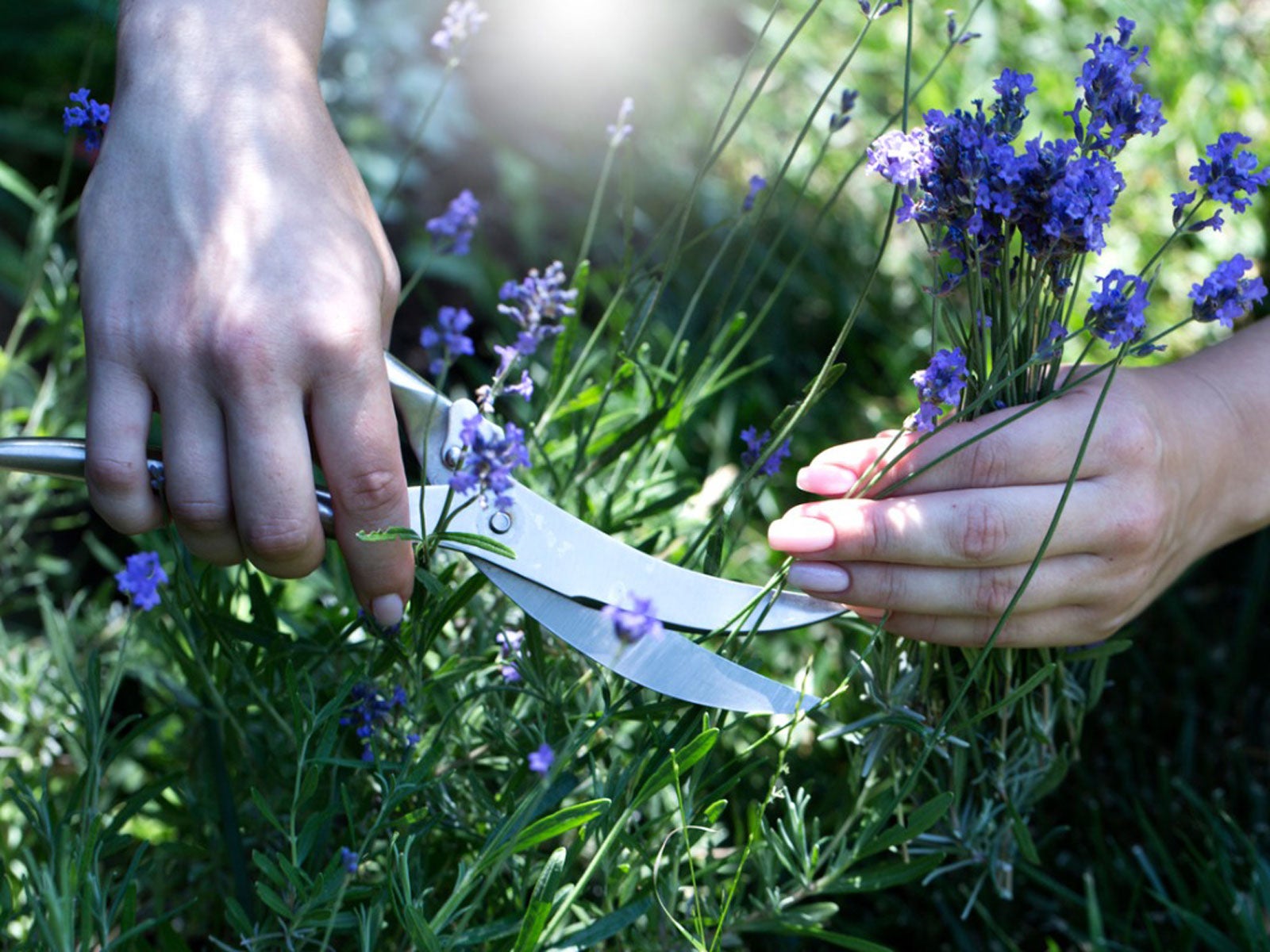Lavender Harvest Time: How And When To Pick Lavender Plants


There are a lot of reasons to grow lavender; the amazing aroma, as a pretty border along walkways and beds, attracting bees, and to harvest and use the flowers for cosmetic or culinary purposes. Harvesting lavender plants isn’t tricky, but you need to know when and how to do it in order to get the most of your bounty.
When to Pick Lavender
If you are just starting out growing lavender, keep in mind that it takes about three years for the plants to reach their peak maturity and to give you the greatest harvest. You can pick some in the first year or two, although leaving the plants alone allows them to grow and develop more.
The best lavender harvest time is early in the morning if you are picking them for aromatic uses. Most of the flowers should still be closed buds. Morning is when the oils in the flowers are at their most concentrated and intense.
The fragrant oils dissipate throughout the heat of the day, which is why it’s important to harvest in the morning if you want the scent. If you plan to use the flowers for decoration, you can wait for them to open more. Open flowers can be used fresh in arrangements or can be dried for later use.
Harvesting Lavender Plants
When picking lavender, use sharp shears or pruners rather than breaking stems by hand. This will give you clean cuts without damaging the stems. Cut the stems low but leave a couple of sets of leaves at the base on the plant.
Bundle sets of lavender stems with twine or rubber bands to keep them organized and tidy. If drying, you can hang these bundles in a spot that is warm and dry but avoid direct sunlight. Once fully dry the buds and flowers can easily be shaken or rubbed from the stems for storage.
Gardening tips, videos, info and more delivered right to your inbox!
Sign up for the Gardening Know How newsletter today and receive a free copy of our e-book "How to Grow Delicious Tomatoes".

Mary Ellen Ellis has been gardening for over 20 years. With degrees in Chemistry and Biology, Mary Ellen's specialties are flowers, native plants, and herbs.
-
 Looking For Plants To Give You The Soft And Fuzzies? Try These 5 Fuzzy Leaf Plant Options
Looking For Plants To Give You The Soft And Fuzzies? Try These 5 Fuzzy Leaf Plant OptionsLovers of texture, drama, silver foliage and tactile plants will adore these special sensory garden additions. These fuzzy leaf plant options will leave you all aglow
By Susan Albert
-
 Get Ready For A Summer Of Hummers! Grow These Full Sun Hummingbird Plants and Flowers
Get Ready For A Summer Of Hummers! Grow These Full Sun Hummingbird Plants and FlowersIf you’re lucky enough to enjoy a sunny backyard, make sure you are maxing out on your pollinator opportunities and grow these full sun hummingbird plants and flowers
By Tonya Barnett